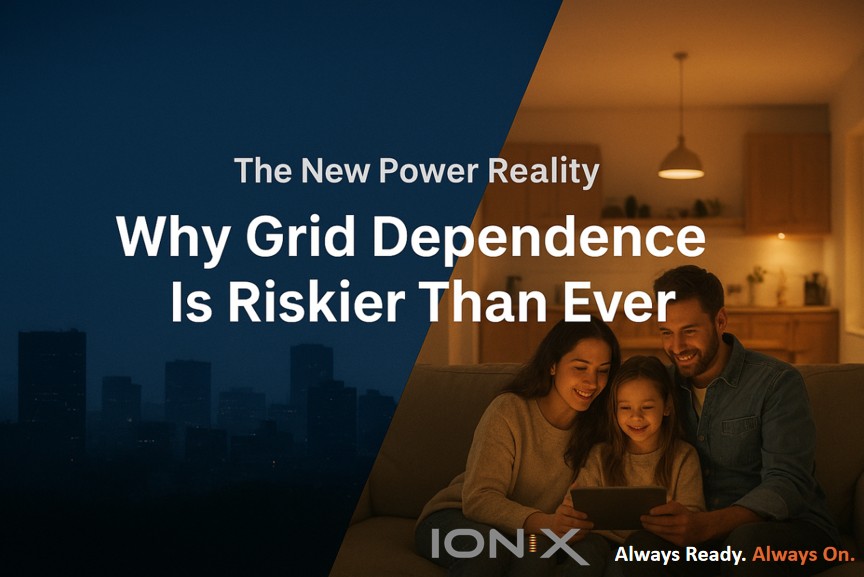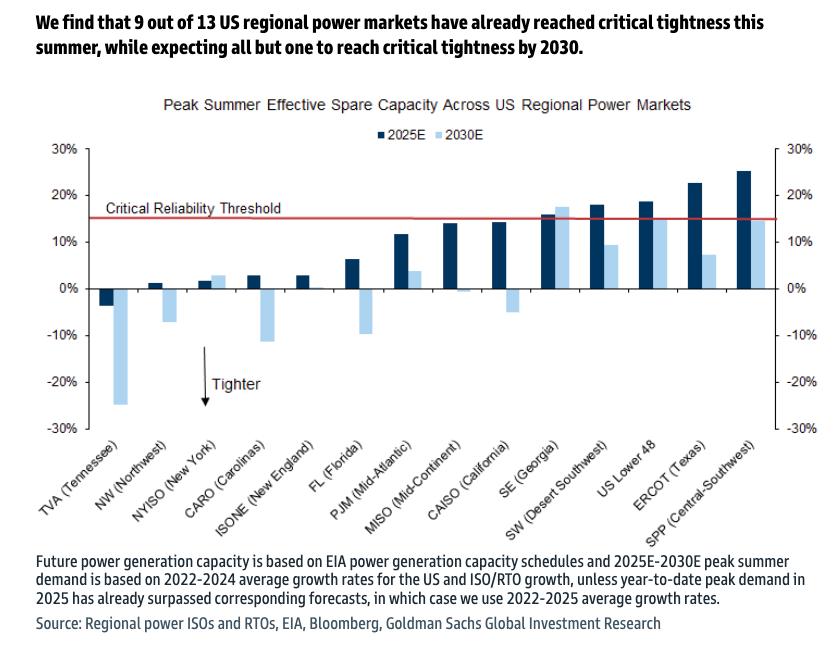
The U.S. power grid is entering a period of unprecedented stress. Goldman Sachs research points to 9 of 13 regional electricity markets already operating with dangerously thin reserves, and projects that nearly all but one will cross critical tightness thresholds by 2030. The picture for Canada is not much better, as utilities warn of grid infrastructure ageing or stress and offer large rebates for consumers to install whole-home energy storage systems.

Analysis covered by ZeroHedge (https://www.zerohedge.com/ai/price-spikes-blackouts-americas-power-crisis-just-getting-started) warns that the U.S. power grid is entering a period of unprecedented stress. Goldman Sachs’ research points to 9 of 13 regional electricity markets already operating with dangerously thin reserves, and projects that nearly all but one will cross critical tightness thresholds by 2030.
This isn’t just about summer heatwaves or winter cold snaps anymore. New and persistent demands—from AI data centers to rapid EV adoption—are pushing the system harder than ever. Meanwhile, the retirement of coal and other firm generation sources is outpacing the build-out of reliable replacements.
The PJM Mid-Atlantic region came within a hair’s breadth of rolling blackouts earlier this year. It’s a scenario that’s becoming alarmingly common: a brief spike in demand, or a minor supply hiccup, can now tip entire regions into crisis.

Grid instability doesn’t only mean the lights might go out—it often means spikes in electricity costs, particularly during high-demand periods. Even households that never lose power can feel the impact in their monthly bills.
Traditionally, the fix for this has been massive infrastructure investments, but those take years—sometimes decades—to materialize. In the meantime, the burden shifts to local solutions that can help both consumers and the grid itself weather the volatility.
Residential and small-business energy storage systems are emerging as one of the most practical tools in this transition period. When paired with the grid—or with solar panels—they can:
These systems are increasingly compact, quiet, and long-lasting thanks to safer lithium iron phosphate (LiFePO₄) batteries and smarter management software.
Here in Canada, we’ve already seen how severe weather events and regional infrastructure limits can mirror many of the U.S.’s challenges. Several provinces now offer rebates to encourage battery adoption, both to reduce strain on the grid and to improve household resilience.
Some systems, like the IONiX SmartWall, are designed to integrate with multiple power sources—grid, solar, or generator—and scale up for larger storage needs. While not the only option, it’s an example of how modern storage technology has evolved from a niche “off-grid” product into a mainstream resilience tool.
The report paints a clear picture: without major changes, price spikes and blackout risks are only going to grow. The large-scale fixes—new generation, upgraded transmission—are essential but will take time.
In the meantime, localized storage is one of the few solutions that individuals can control directly. For homeowners, it’s no longer just a “green” accessory—it’s becoming a cornerstone of energy security.